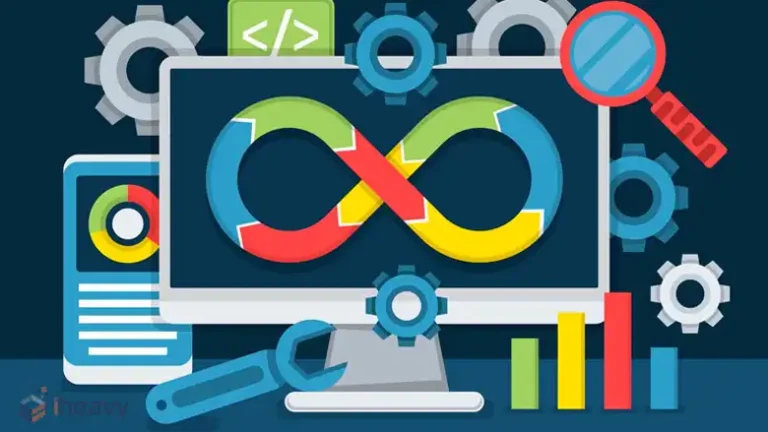DevOps Implementation Checklist
Implementing DevOps in an organization can be a transformative process that aligns development and operations, improves collaboration, and accelerates the delivery of high-quality software.
However, successful DevOps implementation requires careful planning, strategy, and execution. This article provides a comprehensive checklist to guide your DevOps journey.

How to Implement a DevOps Pipeline?
Implementing DevOps is a transformative journey that requires a strategic approach, cultural shifts, and a commitment to continuous improvement. Here’s one way of approaching it.

1. Assessing Your Current State
Before diving into DevOps implementation, it is crucial to assess your current state:
- Evaluate Processes: Identify existing workflows, bottlenecks, and inefficiencies within your development and operations teams.
- Analyze Organizational Culture: Understand how collaboration, communication, and management support function in your organization to gauge readiness for change.
This assessment will provide a clear picture of where you stand and highlight areas that need improvement.
2. Defining Clear Goals
Clear goals are the foundation of a successful DevOps initiative. Establish specific, measurable, achievable, relevant, and time-bound (SMART) objectives. For instance:
- Reduce Deployment Time: Aim to cut the time it takes to deploy new features by a specific percentage.
- Improve Software Quality: Decrease the number of production defects by enhancing testing processes.
These objectives should align with broader business goals to secure executive support and justify investments in tools and training.
3. Building a DevOps Culture
Fostering a culture of collaboration and shared responsibility is essential:
- Promote Collaboration: Encourage joint meetings, workshops, and team-building activities to break down silos.
- Empower Teams: Allow teams to make decisions, take risks, and learn from failures.
- Continuous Learning: Provide ongoing training and professional development to stay updated on DevOps practices and tools.

Building a supportive culture is key to overcoming resistance and ensuring a smooth transition to DevOps practices.
4. Adopting Agile Practices
Agile methodologies complement DevOps by promoting iterative development and responsiveness to change:
- Scrum and Kanban: Use these agile frameworks to enhance flexibility and collaboration.
- Short Feedback Loops: Implement mechanisms for quick feedback incorporation, reducing risk and accelerating value delivery.
This approach helps teams deliver incremental improvements and adapt to evolving requirements more effectively.
5. Automating Everything
Automation is at the heart of DevOps, streamlining processes and minimizing manual tasks:
- Automate Testing: Implement automated testing at all stages of development to ensure code quality.
- CI/CD Pipelines: Establish Continuous Integration and Continuous Deployment pipelines for automated build, test, and deployment processes.
- Infrastructure as Code (IaC): Use tools like Terraform or Ansible for automated provisioning and management of infrastructure.
Automation enhances efficiency, reduces human error, and allows teams to focus on strategic tasks.

6. Selecting the Right Tools
Choosing the right tools is critical for successful DevOps implementation:
- Version Control: Use systems like Git for effective source code management.
- Monitoring and Logging: Implement tools such as Prometheus, Grafana, or ELK Stack to gain insights into application performance.
- Containerization: Leverage Docker and Kubernetes for scalable and consistent environments.
The right tools empower teams to work efficiently and respond swiftly to challenges.

7. Implementing Security Practices
Security should be integrated early in the development process:
- DevSecOps: Incorporate security practices throughout the software development lifecycle to identify and address vulnerabilities proactively.
- Automated Security Testing: Use tools to continuously scan code and infrastructure for vulnerabilities.
This proactive approach helps protect sensitive data and build more resilient applications.
8. Measuring Success
To evaluate the effectiveness of your DevOps implementation, define key performance indicators (KPIs):
- Deployment Frequency: Measure how often deployments occur.
- Lead Time for Changes: Track the time it takes to implement changes.
- Mean Time to Recovery (MTTR): Assess how quickly systems recover from failures.
- Change Failure Rate: Monitor the percentage of changes that fail in production.
Regularly review these metrics to identify areas for improvement and celebrate successes.
9. Iterating and Improving
DevOps is a journey, not a destination:
- Continuous Improvement: Embrace a mindset of learning from successes and failures.
- Post-Mortems: Conduct post-mortem analyses after incidents to understand what went well and what can be improved.
By continually iterating and improving, your organization can adapt to changing needs and maintain a competitive edge.
Frequently Asked Questions
What is the correct sequence for implementing DevOps?
The process involves a continuous cycle of development, testing, delivery, and deployment, with a strong emphasis on automation. Each step in this cycle aims to bridge the gap between development and operations teams, leading to faster and more reliable software releases.
What are the 7 phases of DevOps?
The DevOps lifecycle is a continuous loop encompassing development, integration, testing, monitoring, feedback, deployment, and operations. This iterative process ensures software is consistently developed, tested, and deployed, with constant monitoring and feedback loops to improve quality and efficiency.
Conclusion
Remember that DevOps is a journey, not a destination. It requires continuous adaptation and improvement. Start small, focus on building a strong foundation, and gradually expand your DevOps practices.






